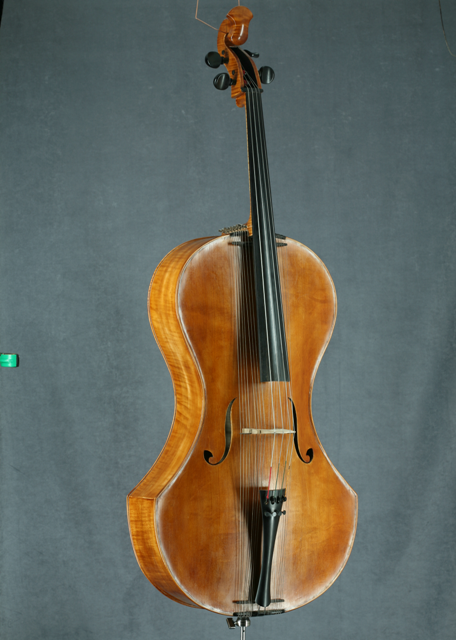Helmut Bleffert’s instrument features four playing and 16 sympathetic strings, writes former Berlin Philharmonic principal cellist Georg Faust. Watch a video below.

The Campanula crossed my musical path for the first time almost 30 years ago. The German violin maker Helmut Bleffert came to me in 1986 and presented his new idea for a stringed instrument. As the form of the instrument is taken from the bell flower, he named it with the Latin name ‘Campanula’. It could be played technically exactly like a classical cello, but similar to a contemporary viola d'amore or Hardanger fiddle, featured 16 additional resonating strings, fixed to the front of the instrument. The sounds were amazing and very intriguing.
At that time I was extremely busy, having just started as principal cellist of the Berlin Philharmonic Orchestra under Herbert von Karajan. I was also leader of the 12 Cellists of the Berlin Philharmonic and was performing widely as a chamber musician and soloist. At that point I could not see how to integrate the very different sound options of the Campanula into my professional life.
When I left the Berlin Philharmonic three years ago my musical imagination was set free and I remembered the Campanula. In the meantime Helmut Bleffert had developed this instrument into a mature musical invention. After a very touching re-encounter with the instrument I understood that now was the time to investigate the musical and human message of the Campanula.
At first the resonating strings feel and sound like playing in a big cathedral. You start listening intensively to the echoes of the resonating strings, which immediately makes your playing slower and more attentive. It takes time to learn how to integrate the played sounds and the resonances. The sound phenomena are very colorful and quite unpredictable which means that the Campanula is an ideal instrument for fantasizing and improvising. It is a medium for inspiration and, for me, a step into a new concept of musical experiences which will influence players as well as listeners.
In the meantime Helmut Bleffert has developed Campanula violins and violas as well, which feature similar sound qualities. With every new instrument he is exploring step-by-step ever greater nuances of sound variation.
Playing a string trio or quartet of Campanula instruments is just magic. The sounds sometimes seem to take an a life of their own and carry the player into other sound dimensions. The resonances seem to be everywhere. I have heard and played chamber music of different kinds on these instruments and am fascinated by the effects.
The Campanula is attracting growing recognition these days. I am very convinced that the Campanula is ready to step on stage and enrich our musical lives. As any classical string player can just take a Campanula and play without having to learn new techniques it offers a wonderful option for new musical experiences.
Watch cellist Stefanie John performing the Campanula below:
Subscribe to The Strad or download our digital edition as part of a 30-day free trial. To purchase single issues click here.








































No comments yet